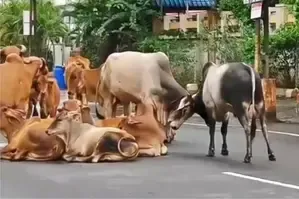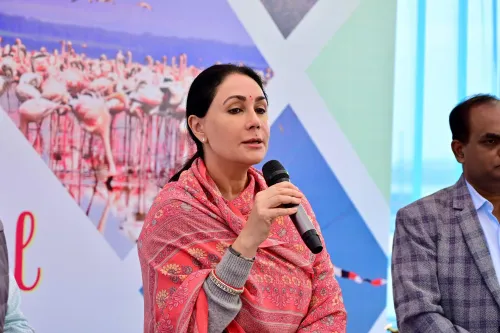How is Punjab Formulating a Strategy Against the Stray Animal Menace?

Synopsis
Key Takeaways
- Multi-departmental collaboration is underway to tackle the stray animal issue.
- Financial support is provided to families of victims of stray animal attacks.
- Over 2 lakh stray animals are currently in registered shelters.
- The government emphasizes animal welfare alongside public safety.
- Continuous directives are issued to control the stray animal population.
Chandigarh, July 15 (NationPress) Punjab's Local Government Minister Ravjot Singh informed the Assembly on Tuesday that the state government plans to unite various departments and specialists to create a thorough strategy aimed at tackling the issue of stray animals within the state.
The minister stated that the Local Government Department will spearhead the coordination among all relevant departments and stakeholders to develop an effective action plan.
He emphasized the government's dedication to addressing this challenge, recalling that the Chief Minister had previously committed to swift action during discussions regarding the Amendment Bill of the Prevention of Cruelty to Animals Act.
Ravjot Singh pointed out that the department has already enacted the Punjab Compensation to Victims of Animal Attacks and Accidents Policy of 2023, which offers financial support to families affected by stray animal attacks resulting in fatalities or permanent disabilities.
This compensation is administered by a committee led by the Deputy Commissioner in each district.
Recognizing the gravity of the situation, the minister noted that the number of stray animals has surged dramatically, frequently causing road accidents and inconveniencing the public.
He referenced the 20th Livestock Census, which reported approximately 1.4 lakh stray animals (with data from the 21st Census yet to be published). Currently, over 2 lakh stray animals are accommodated in 518 registered gaushalas.
Furthermore, the Rural Development and Panchayati Raj Department has constructed 77 cattle sheds across 20 government cattle pounds.
Additionally, Urban Local Bodies (ULBs) are managing ten more cow shelters. Ravjot Singh mentioned that ULBs regularly secure stray animals and relocate them to both government and private 'gaushalas'. Financial support is provided to these 'gaushalas' based on the availability of cow cess funds and resources from ULBs.
Continuous instructions are being issued to ULBs to implement special measures aimed at controlling the stray animal population.
The minister reiterated the government's commitment to a multi-faceted approach that includes experts, animal welfare organizations, and administrative bodies to ensure a sustainable resolution to the stray animal crisis.










